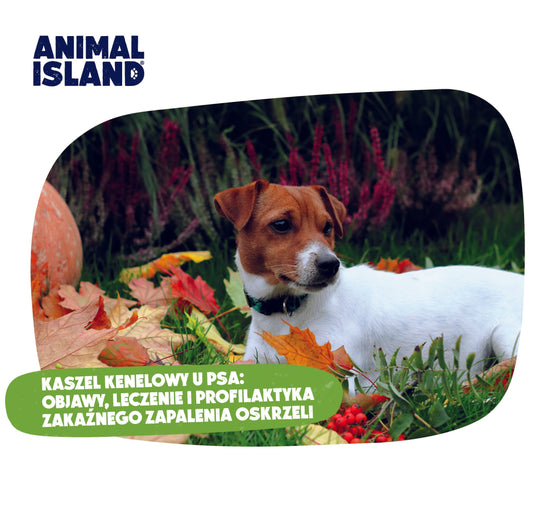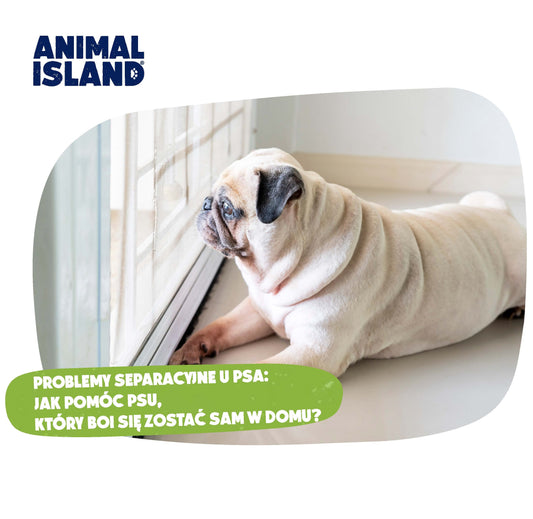OVERWEIGHT IN DOGS - CAUSES AND CONSEQUENCES
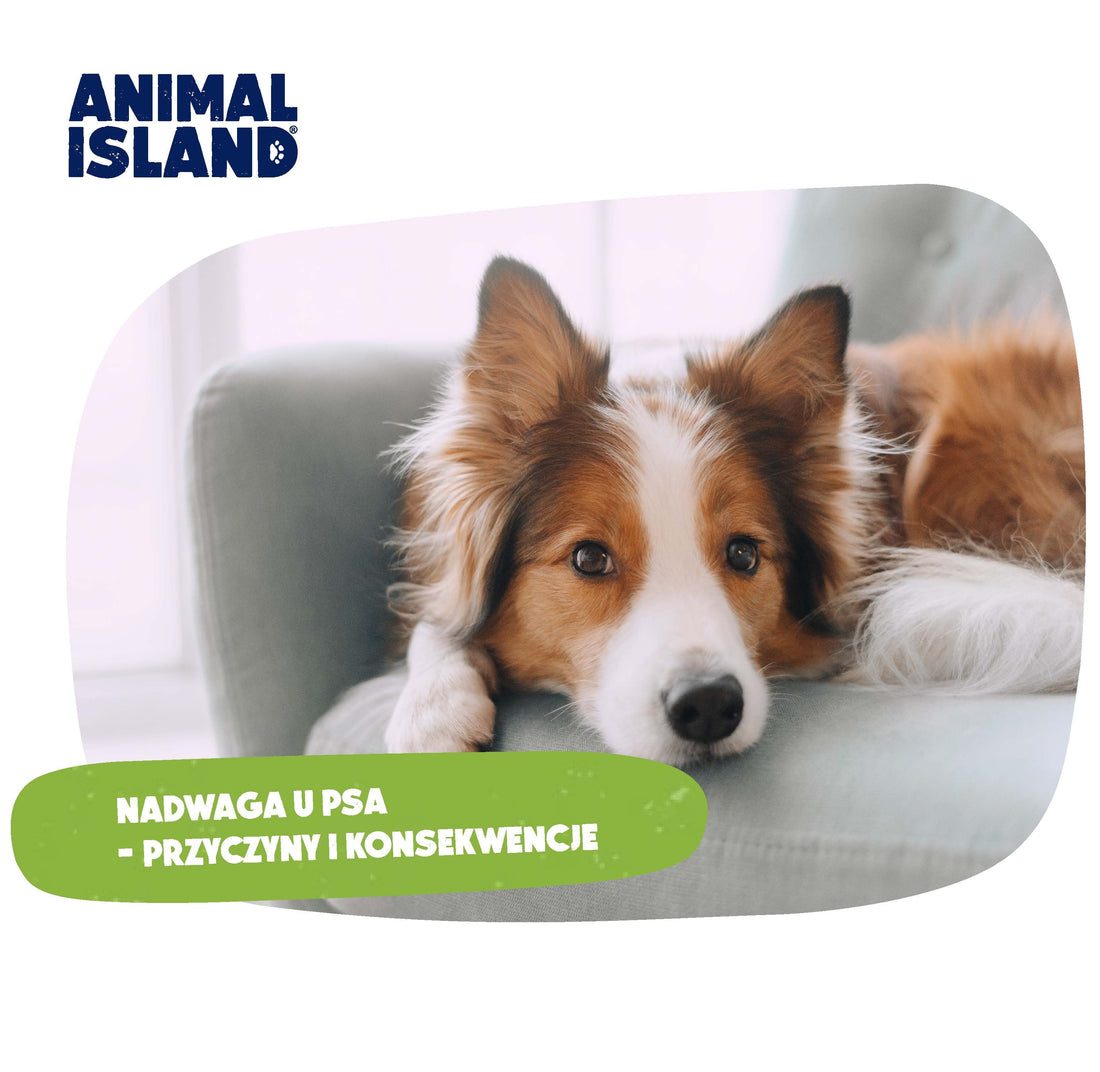
Dear Owners – no one knows your dog like you do. You are the ones who see his joy when he runs for his favorite ball and the suffering in his eyes when something is bothering him. If you suspect that your dog has gained weight – you are not alone. Being overweight is a problem that affects an increasing number of our four-legged friends. The most important thing you can do is to understand with love and care the causes of your dog's overweight in order to help him effectively.
So how can you take care of your dog's weight and ensure a healthy life? In this article, we will help you deepen your knowledge on this topic and try to suggest effective solutions.
WHAT IS OVERWEIGHT IN A DOG?
Overweight dogs are when your pet's body weight exceeds their ideal weight by 10-20%. Although it may seem like a small difference, even a few "extra" pounds can put a strain on your dog's joints, heart, and other organs.
How to recognize an overweight dog?
Signs of overweight in dogs worth paying attention to:
• Lack of a clearly defined waist – when looking at the dog from above, its silhouette should not resemble a rectangle, but have a slightly marked "indentation".
• Difficulty moving – your dog may get tired more quickly, be reluctant to climb stairs or give up on walks.
• Palpable fatness – when you pet your dog, you should have no difficulty feeling his ribs. In the case of an obese dog, they are almost impossible to feel.
• Reduced activity – Overweight dogs are often less playful and may seem “lazy”, when in reality it is their body telling them, “I need help.”
DOG CONDITION ASSESSMENT SCALE
To accurately assess whether our dog has a healthy body weight, we can use the BCS (Body Condition Score) scale. This is a tool used by veterinarians, but you can also use it successfully at home.
How does the BCS scale work?
The BCS scale is a 9-point system in which:
• 1–3 indicates underweight (too thin dogs),
• 4–5 is the ideal body weight,
• 6–9 indicates overweight and obesity.
If your dog is at level 6 or higher, it's worth taking action. You can ask your vet for a BCS score or use online illustrations that clearly show what a dog should look like at each level of the scale. Remember, recognizing the signs of overweight in your dog shouldn't be a reason for shame or guilt. It's an expression of concern that you want to take care of your pet as best you can. A shared path to health - through proper nutrition, activity and regular check-ups - is a beautiful gesture of love.
Your dog doesn't judge you for your mistakes - he looks at you with love and trust. And together you can do something really good: take care of his health for many, happy years.
MAIN CAUSES OF OVERWEIGHT
Improper diet – too much food, bad food
Nutritional errors are one of the most common causes of overweight dogs. Sometimes it is due to too much love – after all, how can you deny your pet another treat when he looks at you with those big eyes? However, even small snacks, if given too often, can lead to weight gain.
The quality of the food is equally important. Foods rich in carbohydrates, low in protein but high in calories can promote weight gain. When choosing dog food, it is worth reaching for products adapted to the dog's age, breed, level of activity and health.
Additionally, the regularity and quantity of meals are of great importance. Overfeeding, uncontrolled adding of food "in advance" or feeding from a human table are a direct path to excess weight.
💡 Tip from the heart: Keep a food diary for your dog for a few days – you might be surprised how many “extras” you collect throughout the day!
Lack of physical activity
Lack of exercise in dogs is another significant factor contributing to being overweight. Just like people, dogs need a daily dose of exercise – not only for their bodies, but also for their mental well-being. Dogs that do not have enough opportunities to walk, play or run start to store excess calories in the form of fat. Sometimes life moves so quickly that it is difficult to find more time for a longer walk – but even 10 minutes more a day can make a difference.
Some breeds are particularly energetic and need more exercise (such as Border Collies or Labradors), others are calmer, but each dog deserves activity tailored to its capabilities.
💡 From the heart to the heart: A walk is not an obligation - it is a magical time just for you. A time when the dog feels that he is the most important. Let it become a ritual that unites, strengthens and delights.
Genetic factors and dog breed
Some dogs are simply more prone to gaining weight—and it’s not your fault. Genetic factors have a huge impact on metabolism and the tendency to store fat. Breeds like Labradors, Beagles, Cocker Spaniels, and Dachshunds are often more prone to being overweight.
In such dogs, special caution and nutritional prophylaxis are key – prevention is better than cure. Genetics is not a sentence, but a signpost: if we know that our dog is at greater risk of obesity, we can build healthy habits from the beginning.
💡 Remember: Your care and vigilance have a greater power than genes. Your decisions based on love can change your dog's life.
CONSEQUENCES OF OVERWEIGHT FOR A PUPIL
The consequences of being overweight in a dog are serious, but they can be avoided – all it takes is understanding, a slight change in daily habits, and lots and lots of love. Because we do it all out of love, right?
Problems with joints and skeletal system
A dog loves to run, jump, climb, and enjoy the world with its entire body. However, when it carries too many extra pounds, its joints and bones begin to suffer. Obesity in dogs significantly burdens its musculoskeletal system.
Every step with excess weight is a greater effort for the joints, especially the hips and knees. Over time, this can lead to degeneration, osteoarthritis, mobility problems, and even chronic pain. Dogs don't always show that they are in pain - sometimes they just become less willing to move, rest more often, stop jumping on the couch, which they used to love.
💡 It is worth looking at such signals with love not as "aging", but as possible effects of being overweight - and taking action before the pain takes away the joy of life from your dog.
Heart disease, diabetes and other diseases
Being overweight doesn't stop at your joints. It also puts a huge strain on your circulatory system and internal organs. Your dog's heart has to pump more blood to feed every gram of extra body mass. This can lead to circulatory failure, high blood pressure, and even serious heart disease.
That's not all - obesity in dogs increases the risk of diabetes because it disrupts the body's hormonal balance. Diabetes is a chronic disease that requires daily injections and very meticulous monitoring of diet and health.
In addition, there are liver problems, increased susceptibility to inflammation, skin diseases, and even a shortened life expectancy. Overweight dogs live an average of 2 years less than their peers of normal weight - and that's a whole lot of shared walks, cuddles and joy that you could be missing out on.
💡 Think about how many beautiful moments you can experience with your dog - taking care of its weight is an investment in these moments, in health and joy that will last as long as possible.
HOW TO PREVENT OVERWEIGHT?
Preventing your dog from becoming overweight doesn’t have to be difficult or stressful – all it takes is conscious care, regularity and heart put into every day spent together.
Balanced diet – what food to choose?
A dog's diet is the foundation of its health. What a dog eats affects not only its weight, but also its energy, fitness, coat condition and overall well-being. To effectively prevent overweight in dogs, it is worth choosing food:
• a properly balanced amount of calories,
• rich in high-quality animal protein,
• with a low glycemic index (i.e. without excess grains and sugars),
• adapted to the age, breed, activity level and possible health problems of the dog.
A dog's diet should be planned wisely - best consulted with a veterinarian or animal dietician. Be careful with snacks - even healthy ones should be given in moderation and included in the daily calorie balance.
💡 Heart to heart: Love wisely - a treat doesn't have to mean a REWARD. Praise, petting or playing are also forms of ennoblement that your dog will love!
Regular physical activity – how often should you walk your dog?
Movement is life – and for a dog it is also a way to enjoy, explore the world and... maintain a healthy figure. How to care for a dog's weight? Regular walks and physical activity are key.
Depending on the age, breed and health of your dog, it is worth taking care of:
• minimum 2-3 walks a day, of which at least one is longer (30 minutes or more),
• activities such as fetching, tracking, playing with other dogs,
• mental training – they also help burn calories and prevent boredom.
Dogs with higher exercise needs, such as Labradors, Border Collies and Huskies, will need more activity than couch potatoes like pugs or bulldogs – but each dog needs a daily dose of exercise tailored to its needs.
💡 With love: Make walks your ritual – time together without phones, without rushing. It's not just for the dog – it's also for you.
Monitoring your dog's weight and condition
One of the most important elements of preventing your dog from becoming overweight is to regularly monitor their weight and body condition. You don’t need a special scale at home – just a few simple habits will do:
• Check your dog's weight once a month (e.g. at your veterinarian or at a clinic).
• Observe the body shape: the dog should have a clearly defined waist, and the ribs should be visible under a light layer of fat.
• Use the BCS (Body Condition Score) as a fitness assessment tool – many educational materials are available online.
Early detection of disturbing changes – such as an enlarged belly, lethargy or decreased activity – allows you to react quickly and avoid bigger problems.
💡 With care: Write down changes in a notebook or app – tracking progress (even the smallest ones) is a beautiful path to health and a longer life together.
ACTION PLAN – LOSE EXTRA WEIGHT
Remember that losing weight in your dog is a process that should be done gradually, safely and with great gentleness. Below you will find an action plan that will help you go through this path together - step by step, with a smile, patience and pride in each achieved goal.
Weight loss stages – how to gradually change your diet?
The first and most important element is a reducing diet for the dog - but this is not about drastic restrictions! The key to success is to gradually reduce the caloric content of meals, so that the dog's body can adapt calmly, without stress or hunger.
Here's how:
Consult your veterinarian – they will help you determine your ideal target weight and suggest a specific feeding plan.
Choose veterinary or diet food, dedicated to weight loss – with high protein and fiber content and lower calories.
Wet dog food
• Natural weight loss aid - wet food has one significant advantage over dry food - it is much less caloric. Mainly because it contains more water (even 70-80%), which means that the dog eats a larger meal in volume, but provides itself with fewer calories. This is a huge advantage, especially for dogs that tend to be overweight or even obese.
• No grains, sugar or unnecessary additives - avoid foods containing grains, artificial fillers and sugar - these are most often responsible for unnecessary calories and lack of satiety in dogs. Good wet food based on simple ingredients naturally supports a healthy weight and metabolism.
• Meat, offal, vegetables – the perfect base - high-quality wet food is based on ingredients that are in line with the biological needs of the dog: meat as a source of protein, offal rich in vitamins and minerals, and vegetables and fruit providing fiber. Such a meal is not only nutritious, but also filling – the dog feels full, even though it eats fewer calories.
• Better digestion and greater hydration - wet food not only supports weight loss, but also improves digestion and hydration of the body. This is especially important for dogs that are less willing to drink water. Better hydration supports the functioning of the kidneys and helps remove toxins from the body.
Don't change everything at once - start by mixing the new food with the old one, gradually increasing the share of the new food over 7-10 days.
Maintain regularity – serve meals at fixed times, preferably divided into 2–3 portions a day.
Eliminate “human” snacks and excess treats – remember that even a small piece of cheese can undo your efforts.
💡 Love is not an extra morsel from the table - it is a healthy heart, agile paws and joy of life.
What exercises help a dog lose weight?
Exercise is the best ally in losing weight for your dog – but the rule here is also: calmly, gradually, with love. Every dog is different, so the activity must be adapted to its age, condition and capabilities.
Here are some proven, safe forms of exercise:
Daily walks – minimum 30 minutes a day, but it is worth increasing their intensity over time.
Fetching – playing with a ball or frisbee is a great way to exercise and build bonds, but be careful not to overload your dog's joints and adjust the intensity to your pet's abilities.
Swimming – an ideal activity for dogs with joint problems or who are very overweight – relieves the joints while engaging the muscles.
Smell games and obedience training – activate not only the body, but also the mind!
It is important to introduce exercise regularly, but not to overexert the dog. It is better to have several short, joyful sessions a day than one too long, after which the dog will be exhausted.
💡 Remember: You don't have to be perfect. Just be consistent and loving.
Every kilogram lost means more life, more fun and more time together. And that's exactly what it's all about - to share everyday life, the wagging of the tail and that indescribable joy that only a dog can give us completely unconditionally...


 Wścieklizna
Wścieklizna

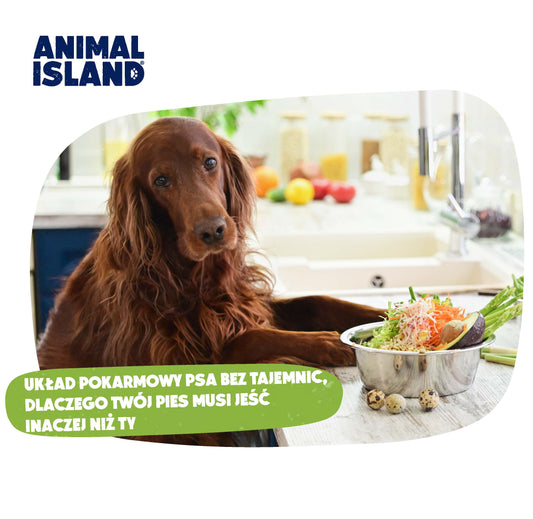

 Zęby i jama ustna – stworzone do chwytania, nie mielenia
Zęby i jama ustna – stworzone do chwytania, nie mielenia
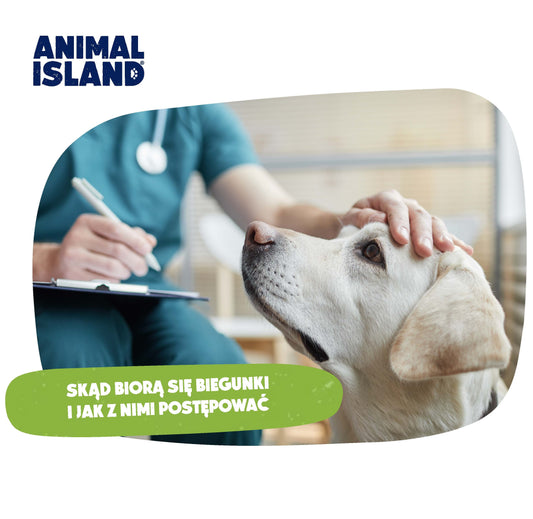



 ROZSĄDNA DIETA, BY ZAPOBIEGAĆ BIEGUNCE W PRZYSZŁOŚCI
ROZSĄDNA DIETA, BY ZAPOBIEGAĆ BIEGUNCE W PRZYSZŁOŚCI
